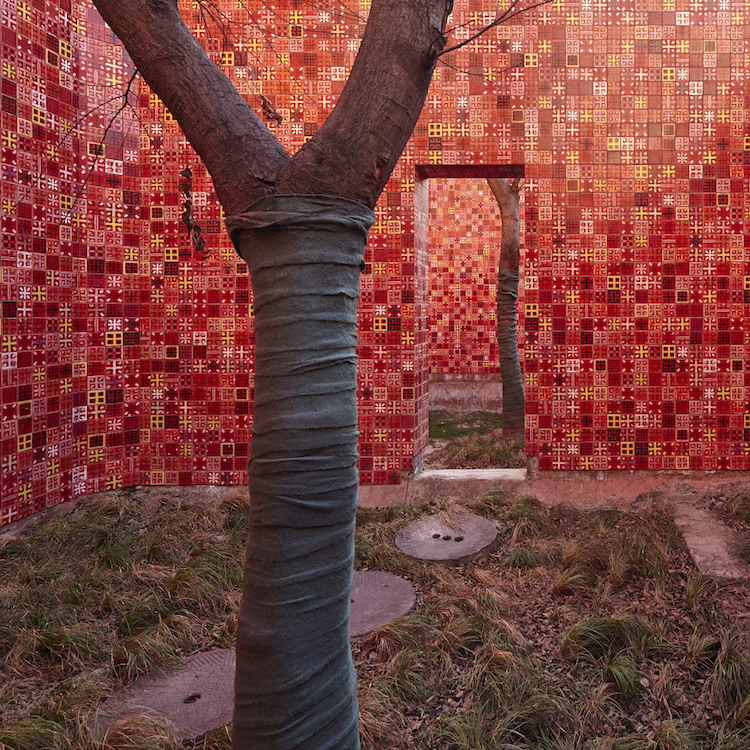SHANGHAI, China––At a distance, the new Artron Arts Center‘s pixelated effect looks like ruddy-colored brick, but upon closer inspection, the look is achieved, rather, through the use of patterned ceramic tile, which is woven from the exterior throughout the building’s interior.



Reconstructed from the sewage treatment station of Shanghai’s towel factory, the design comes from Atelier Deshaus in collaboration with Chinese painter Ding Yi, who designed the tiles, the architect writes.
Architect recommend artist to design ceramic tile with different color scheme base on his own drawing style, witch [sic] to be used as the primary decorative material for facade with the design purpose of adding a new layer of significance on existing industrial construction.


A celebrated abstract painter, Ding Yi, rejects narrative and representation in his artistic process, opting instead, as Artsy writes, for mesmerizingly intricate geometric patterns.
He creates colorful, abstract geometric works through an exacting process: each painting comprises countless individually painted crosses—usually painted on plaid fabric—whose minimalist look belies the maximal effort and consciousness of his otherwise intuitive process
Ding Yi’s colorful crisscross-patterned ceramic tiles elevate the building’s artistic mission while continuing to be informed the building’s original industrial purpose.

In reimagining the old structure, the architect strived for maximum utilization and function of the original space. In addition to keeping some of the building’s historic character such as the original sewage bucket funnel, the architect was able to add a cafe, bookstore and exhibition hall.

Love or loathe this example of tile architecture from the world of contemporary ceramic art and contemporary ceramics? Share your thought sin the comments below.

Add your valued opinion to this post.